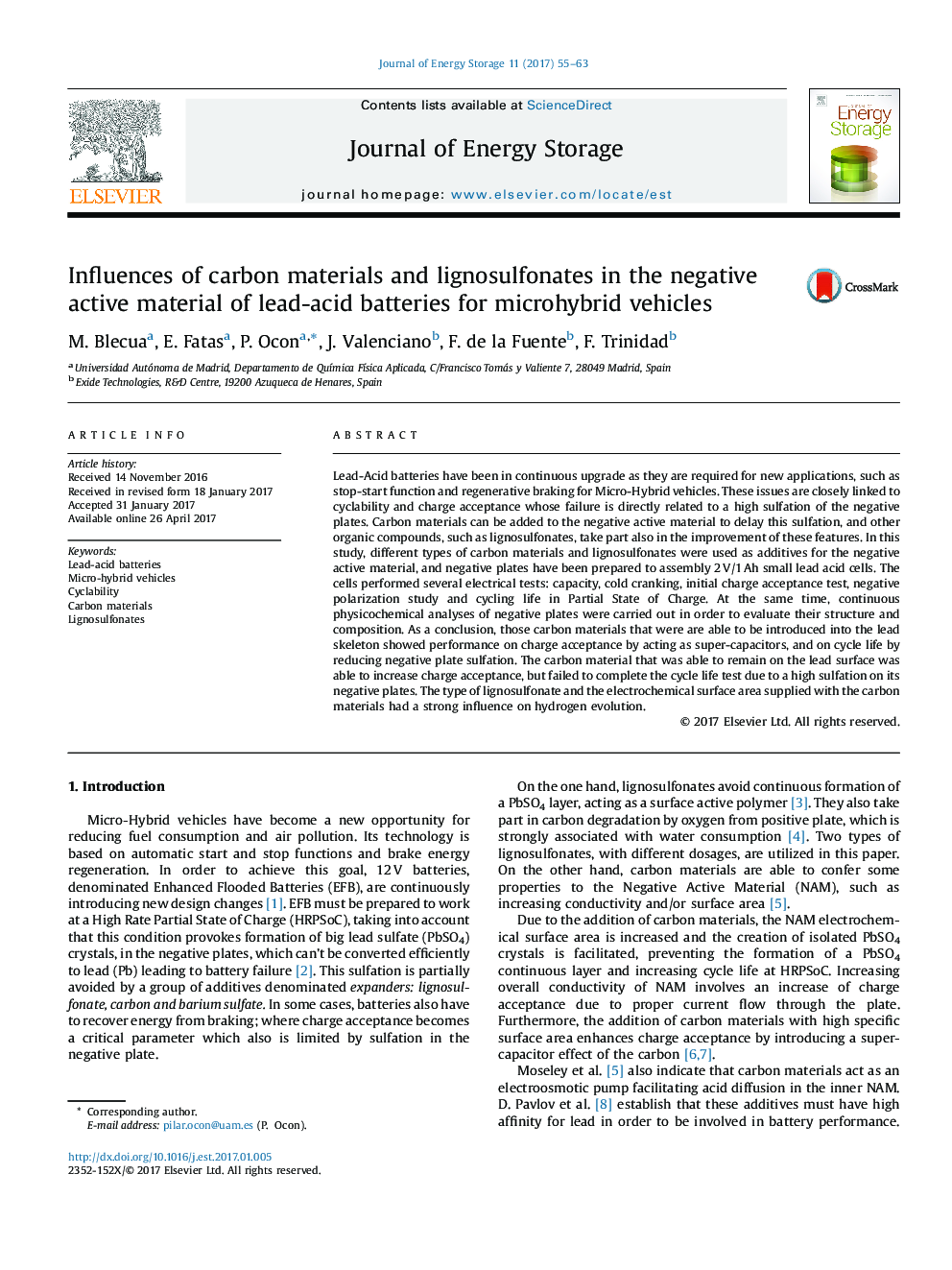| کد مقاله | کد نشریه | سال انتشار | مقاله انگلیسی | نسخه تمام متن |
|---|---|---|---|---|
| 5127264 | 1489011 | 2017 | 9 صفحه PDF | دانلود رایگان |
- Mixtures with different carbon materials and lignosulfonates were prepared.
- Lead acid cells performed several electrical tests including cycling life at PSoC.
- Type and dosage of the carbon materials involve different NAM structures.
- Carbon materials with high surface area show better results in charge acceptance.
- Final sulfate concentration depends on the type and dosage of the carbon material.
Lead-Acid batteries have been in continuous upgrade as they are required for new applications, such as stop-start function and regenerative braking for Micro-Hybrid vehicles. These issues are closely linked to cyclability and charge acceptance whose failure is directly related to a high sulfation of the negative plates. Carbon materials can be added to the negative active material to delay this sulfation, and other organic compounds, such as lignosulfonates, take part also in the improvement of these features. In this study, different types of carbon materials and lignosulfonates were used as additives for the negative active material, and negative plates have been prepared to assembly 2Â V/1Â Ah small lead acid cells. The cells performed several electrical tests: capacity, cold cranking, initial charge acceptance test, negative polarization study and cycling life in Partial State of Charge. At the same time, continuous physicochemical analyses of negative plates were carried out in order to evaluate their structure and composition. As a conclusion, those carbon materials that were are able to be introduced into the lead skeleton showed performance on charge acceptance by acting as super-capacitors, and on cycle life by reducing negative plate sulfation. The carbon material that was able to remain on the lead surface was able to increase charge acceptance, but failed to complete the cycle life test due to a high sulfation on its negative plates. The type of lignosulfonate and the electrochemical surface area supplied with the carbon materials had a strong influence on hydrogen evolution.
105
Journal: Journal of Energy Storage - Volume 11, June 2017, Pages 55-63
